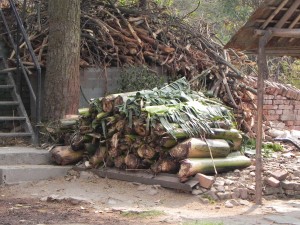Dr. Jeewan Thapa participated in ECI’s Elephant Health Camp. Prior to working for the zoo, Jeewan worked with the elephants at Chitwan. Dr. Jeewan promised to keep me informed about Pawan Kali’s pending move.
Along with information about Pawan Kali’s housing, daily routine, care and diet, Dr. Thapa provided information about the cost to feed Pawan Kali at the zoo. I found it interesting that the cost to feed Pawan Kali was equal to the cost to feed an elephant at the Sanctuary. The chart below lists Pawan Kali’s daily diet, minus the special foods she receives on “Ganesh Tuesdays.”
| Feed items for Pawan Kali | Daily requirement in (kg)=(2.2lbs) | Cost/Kg (NRs) | Total cost | Remarks |
| Unhusked rice | 12 | 29 | 348 | |
| Molasses | 1 | 57 | 57 | |
| Straw | 15 | 17 | 255 | |
| Salt | 0.15 | 10 | 1.5 | |
| Carrot | 2 | 37 | 74 | |
| Pumpkin | 2 | 20 | 40 | |
| Potato | 2 | 15 | 30 | |
| Green fodder | Around 100 | – | 1,600 | Still fodder is collected free around Kathmandu valley. The cost is for two handlers to work a half-day to collect fodder twice a week. (Rs800/times) |
| 2,405 | ||||
| Total cost (1$=Rs72) | $33 | |||
Out of respect for the possibility of cultural differences regarding the solicitation of funds, I consulted with the zoo about money being donated for Pawan Kali. They graciously agreed that this is a great opportunity to educate people and raise awareness worldwide. My idea is that maybe the EleAids would like to designate Pawan Kali as a Feed an Elephant for a Day recipient. Instead of having a PenPal in Nepal, you would have an ElePal.

